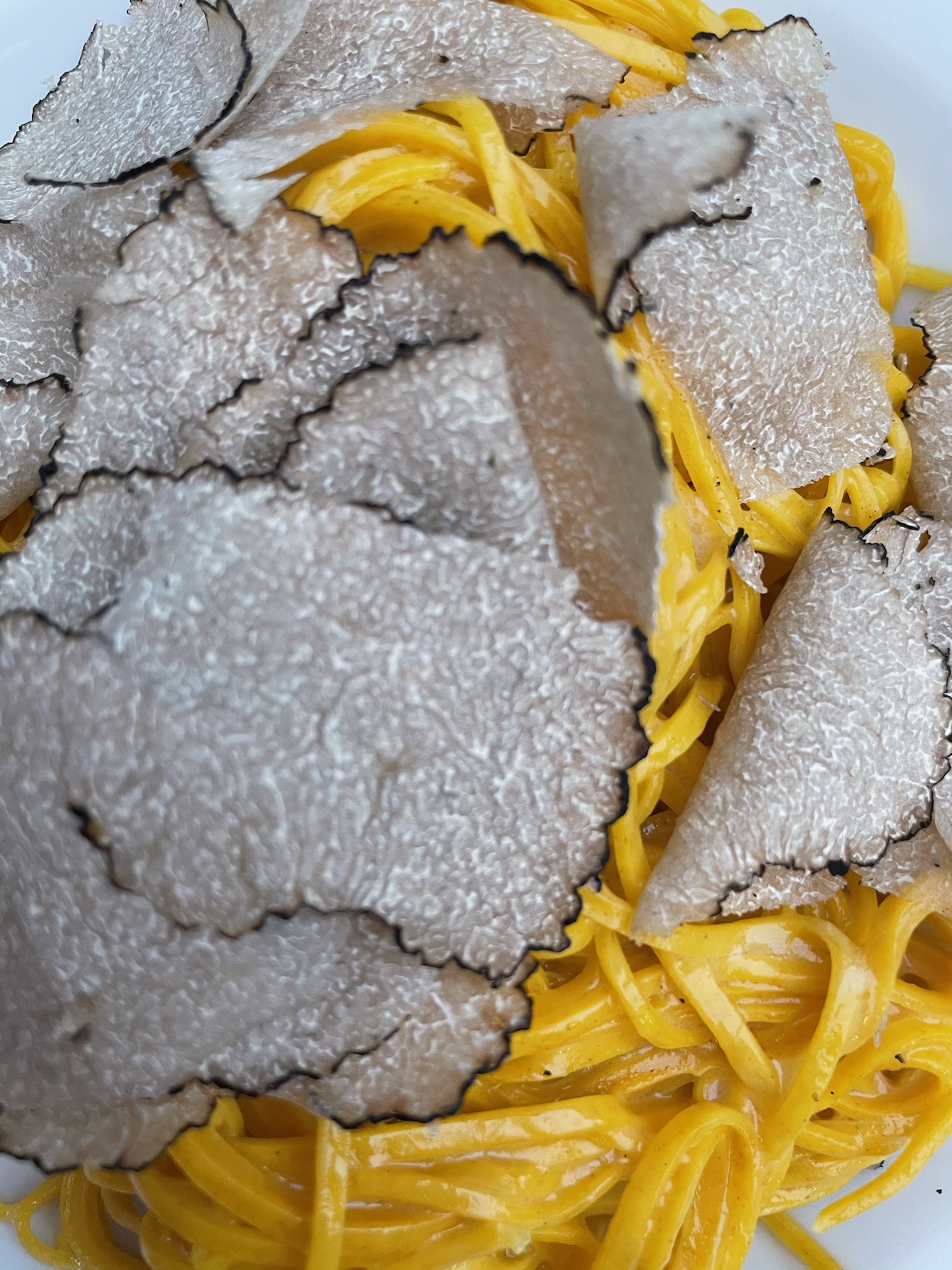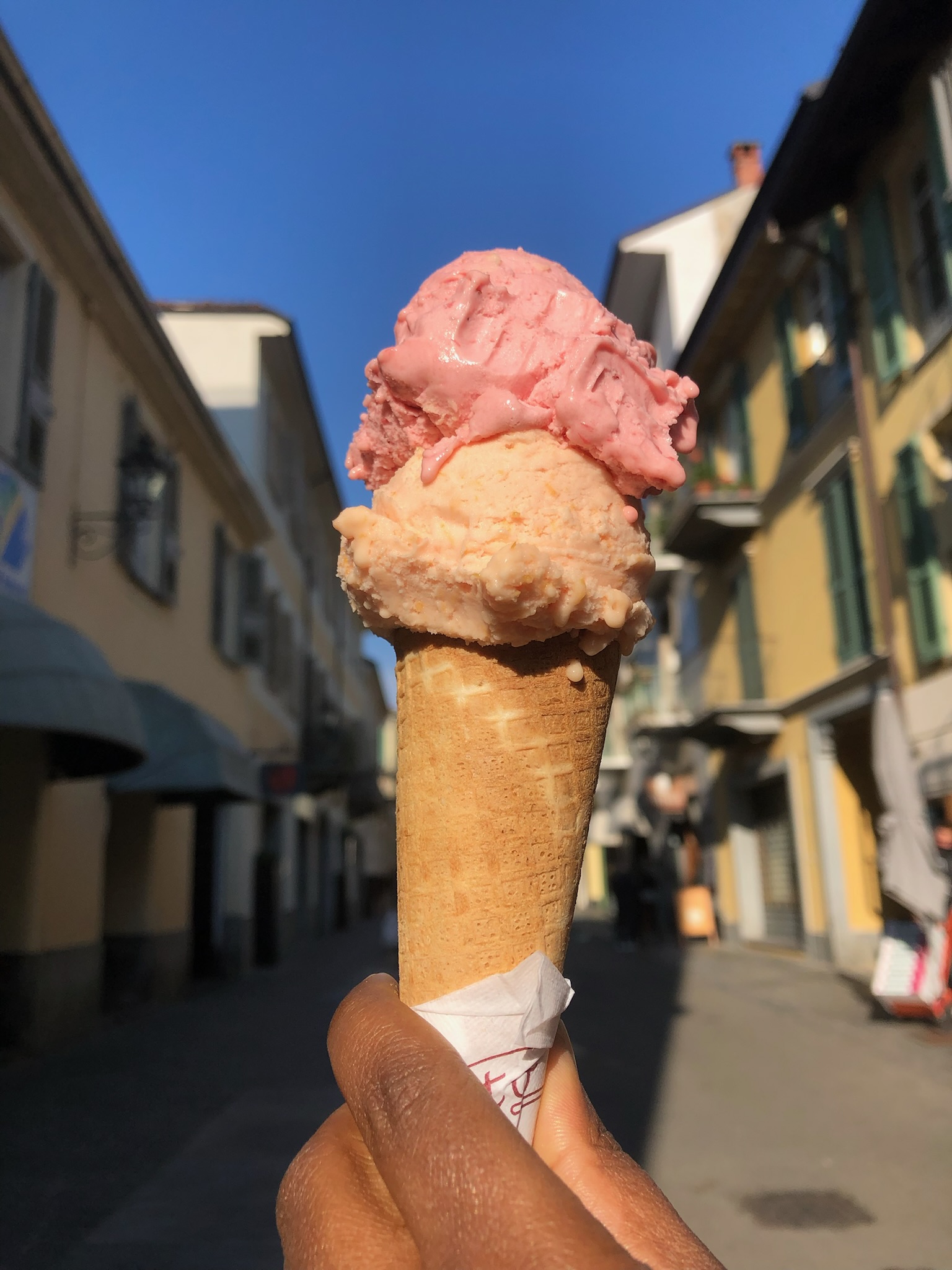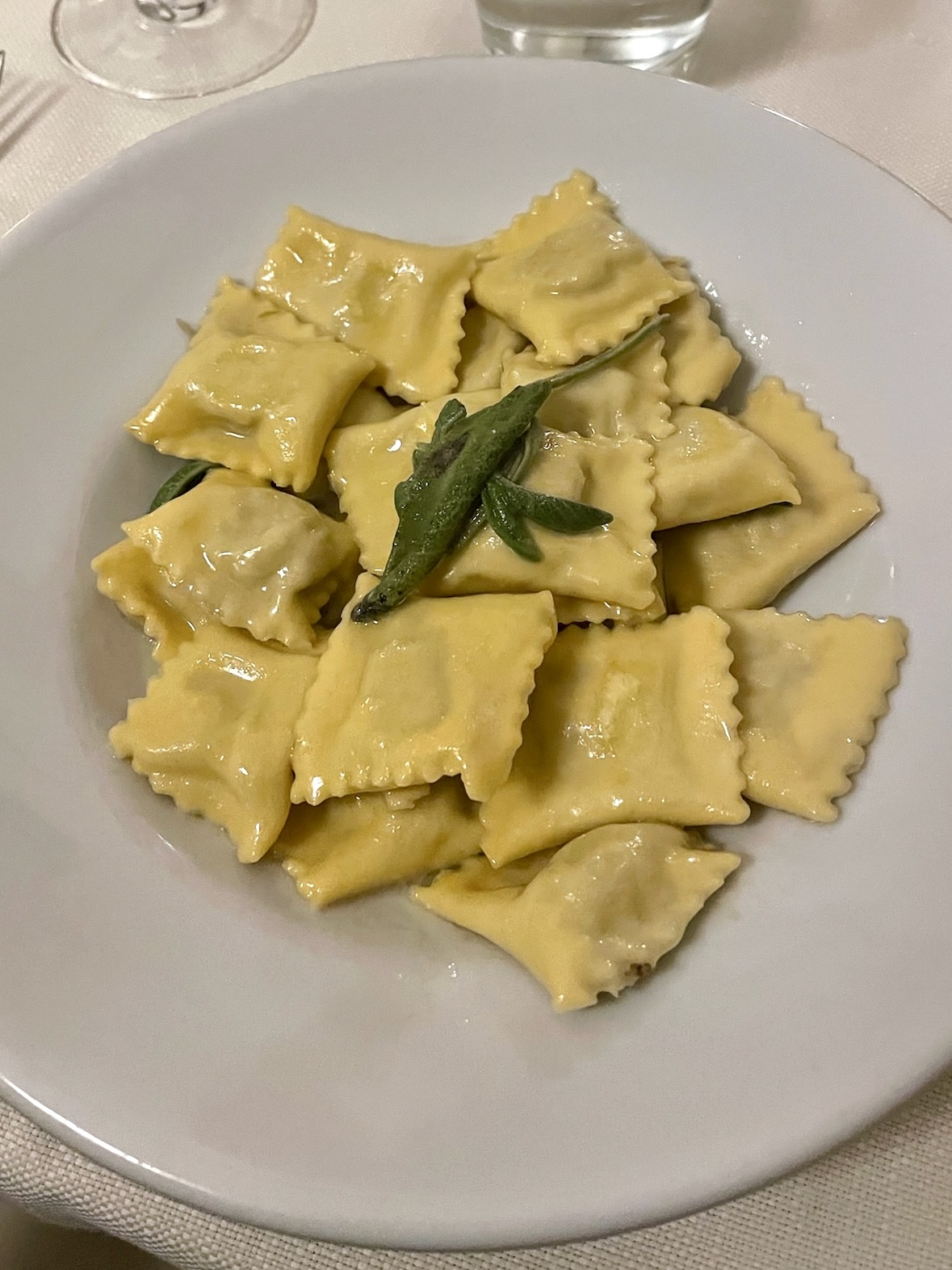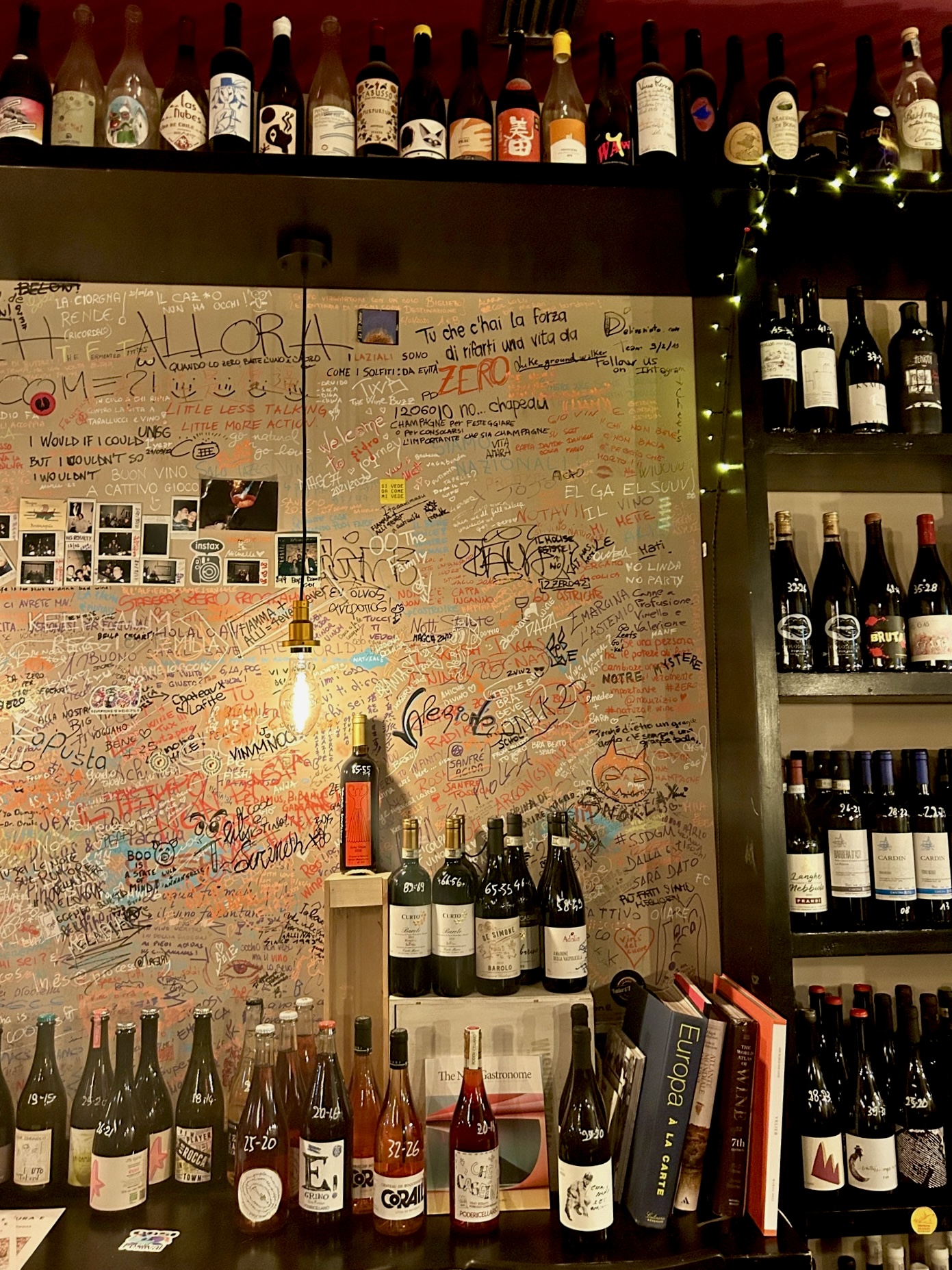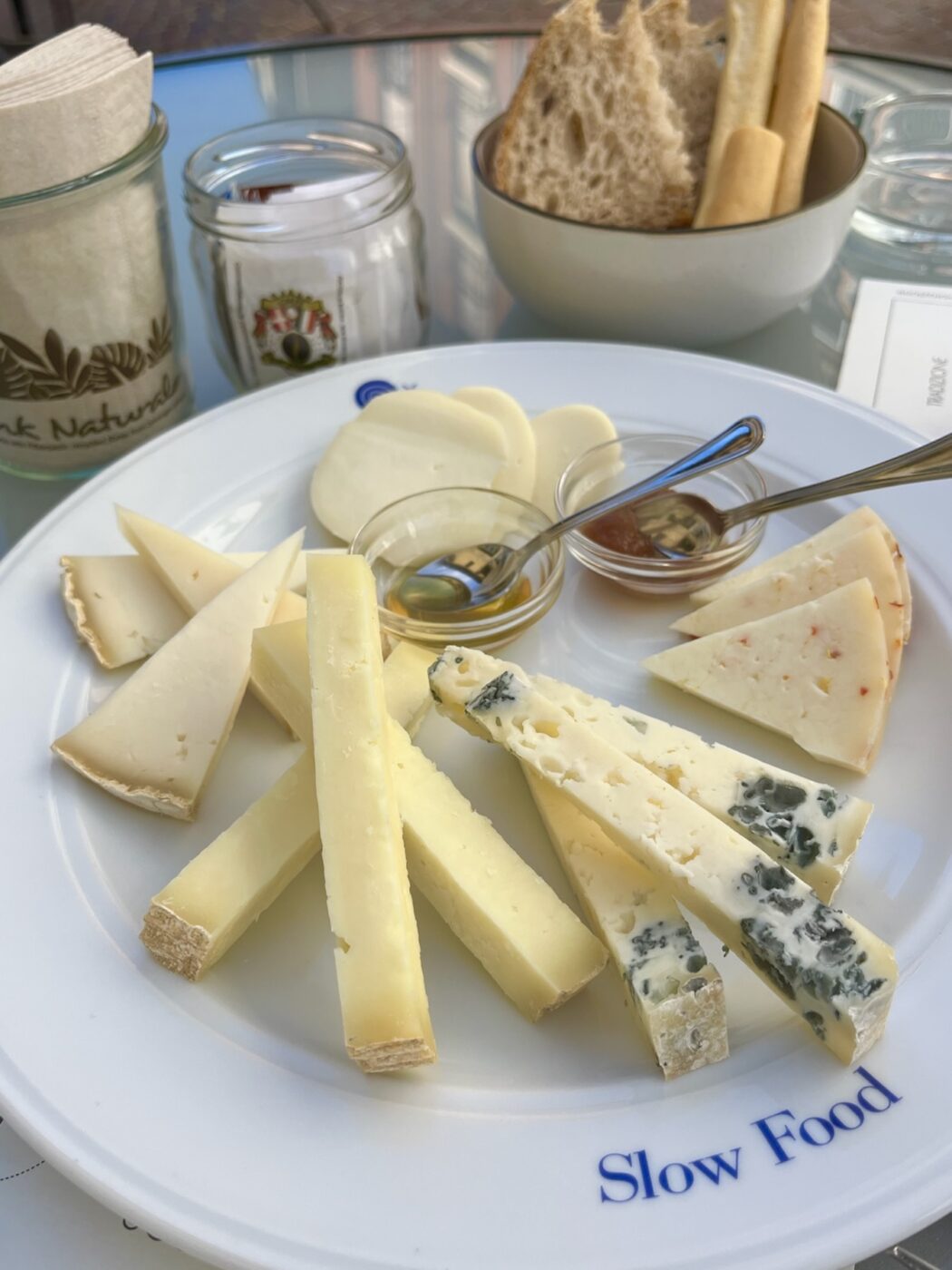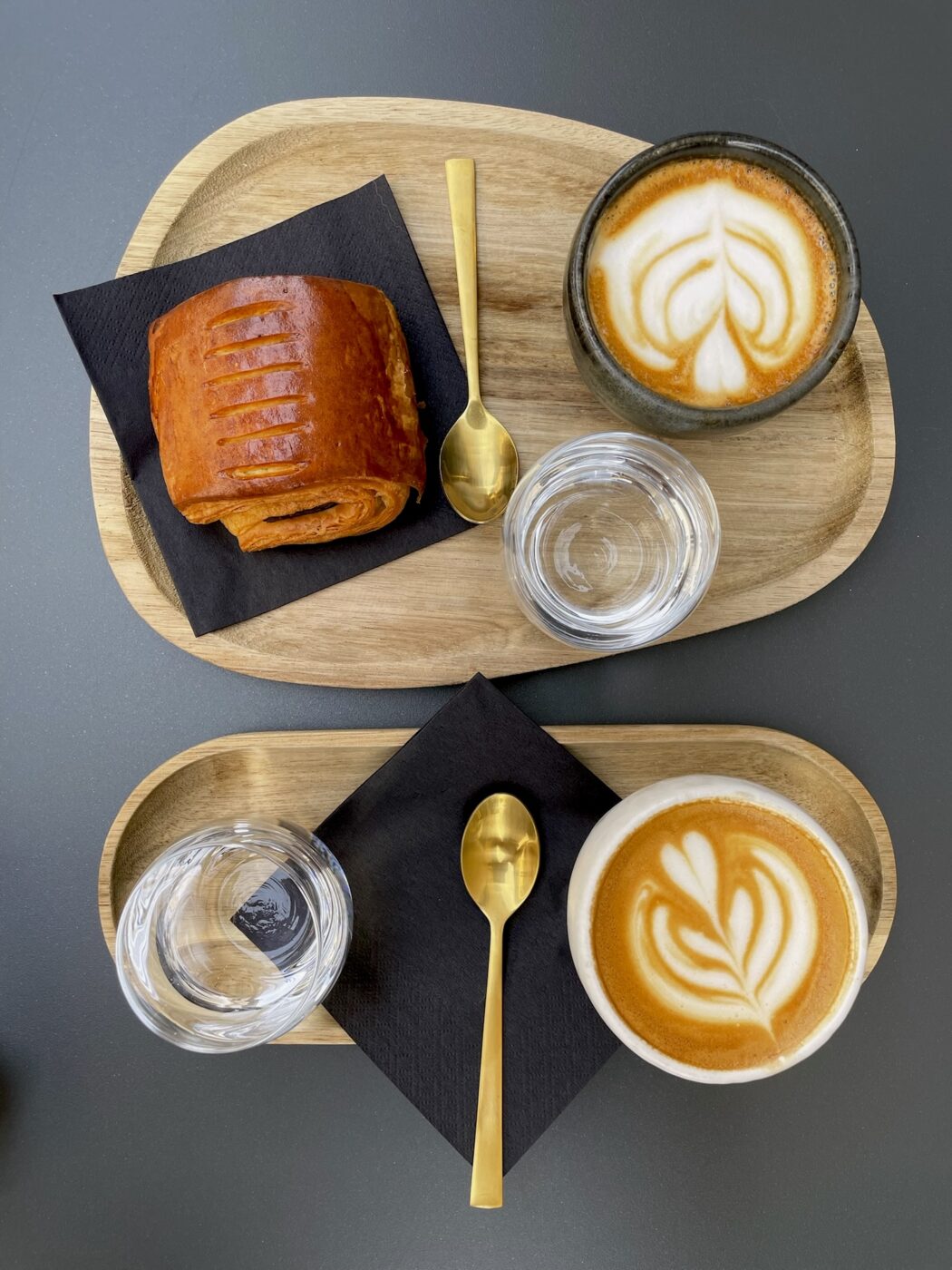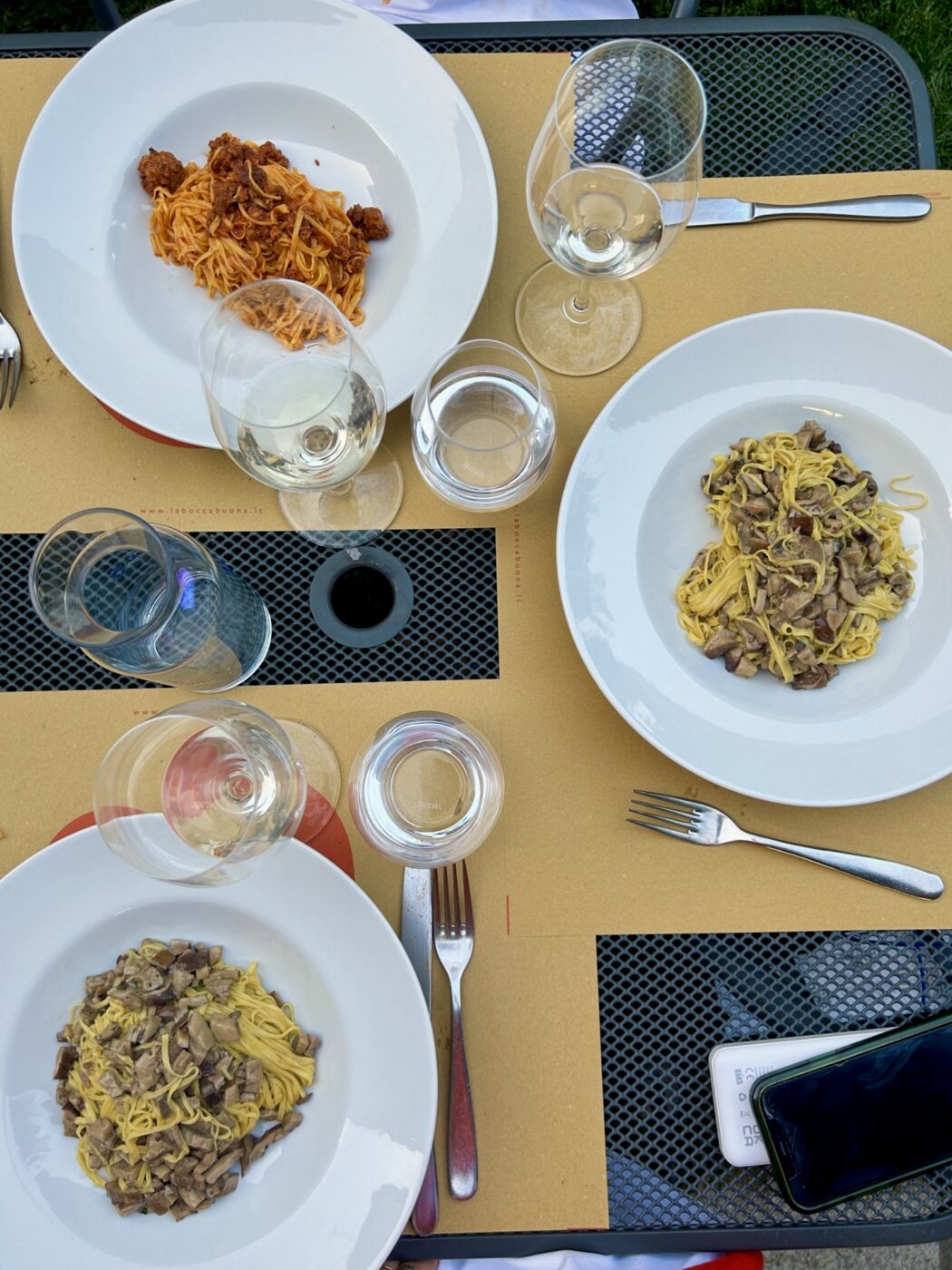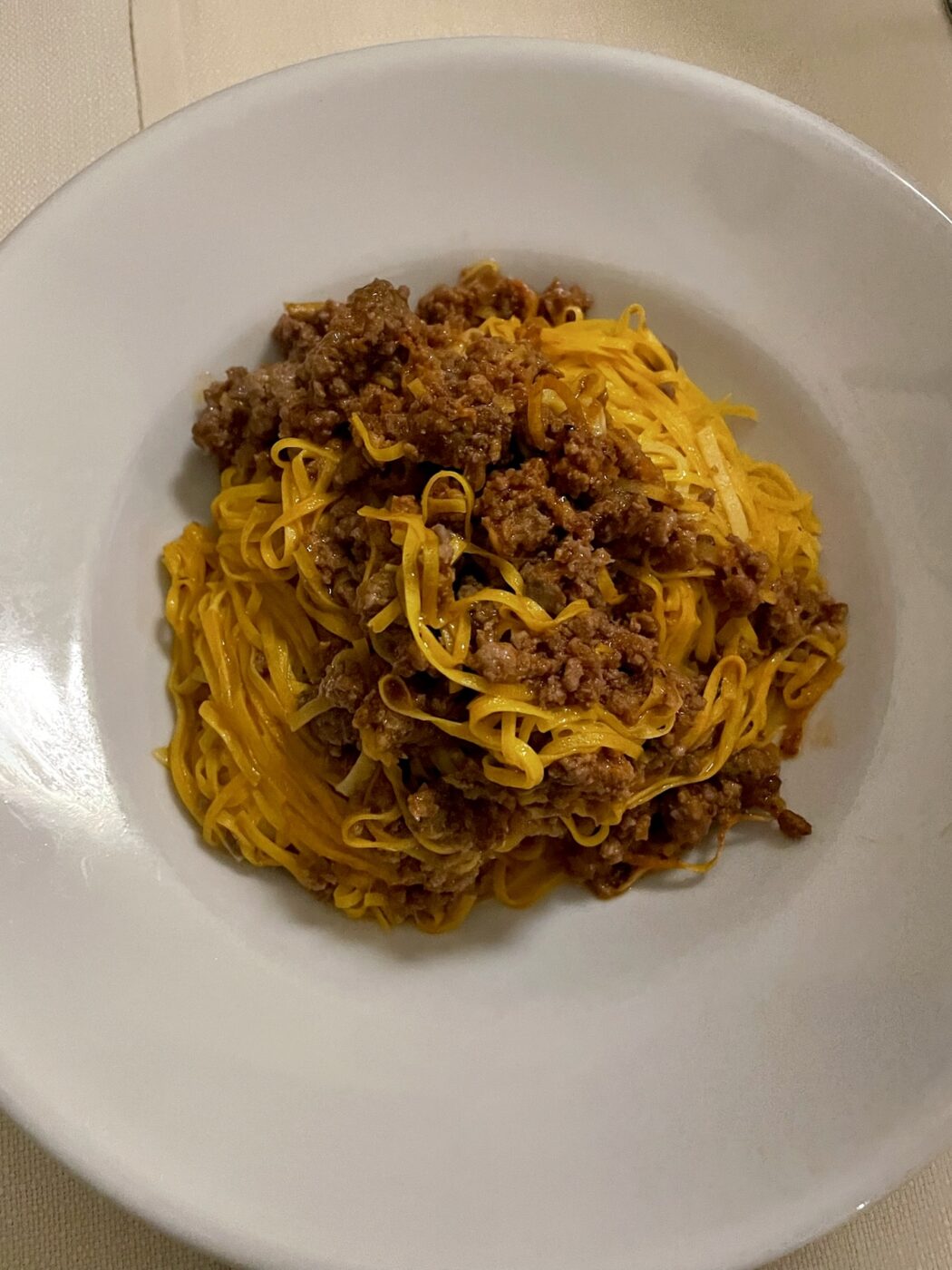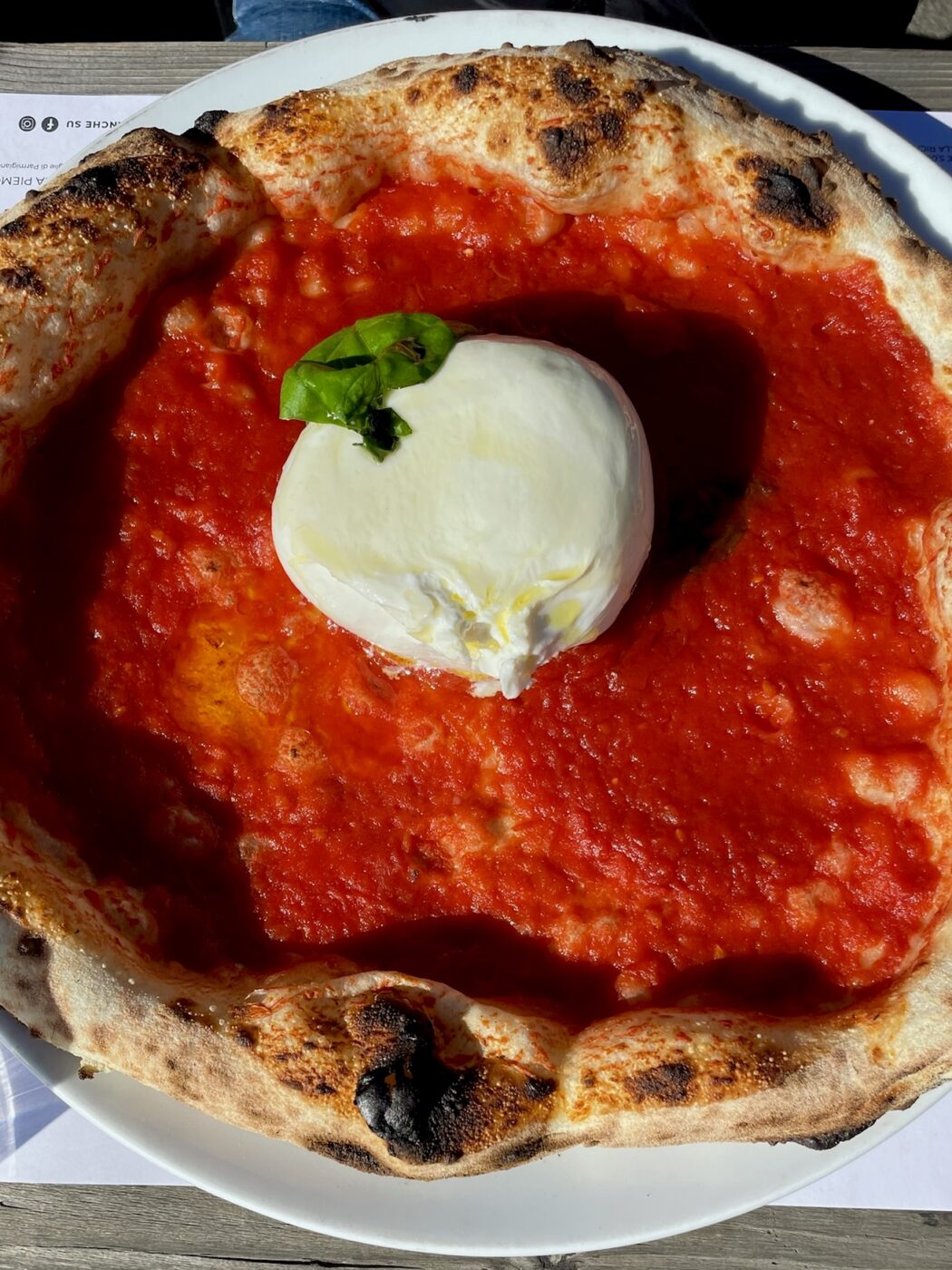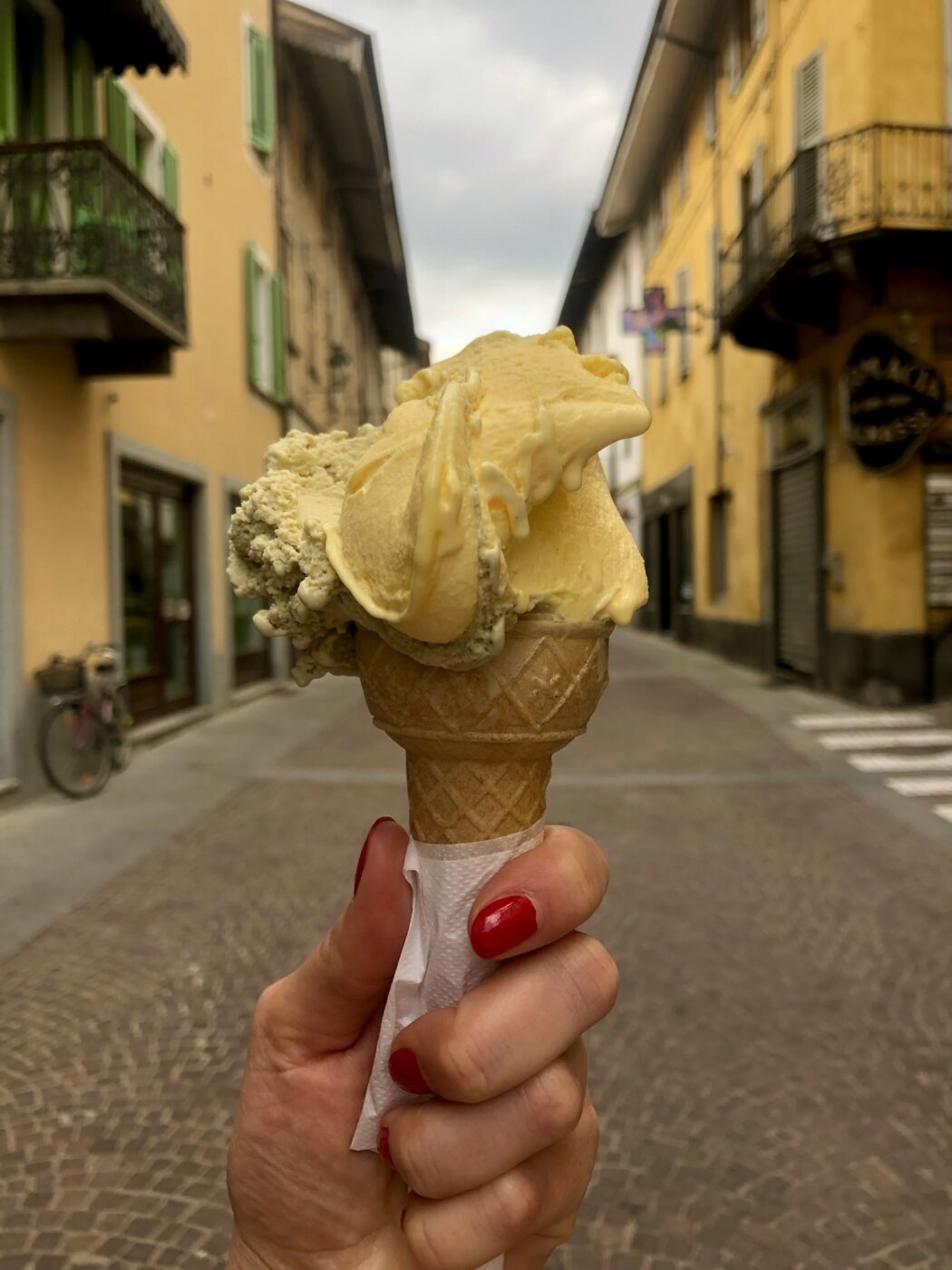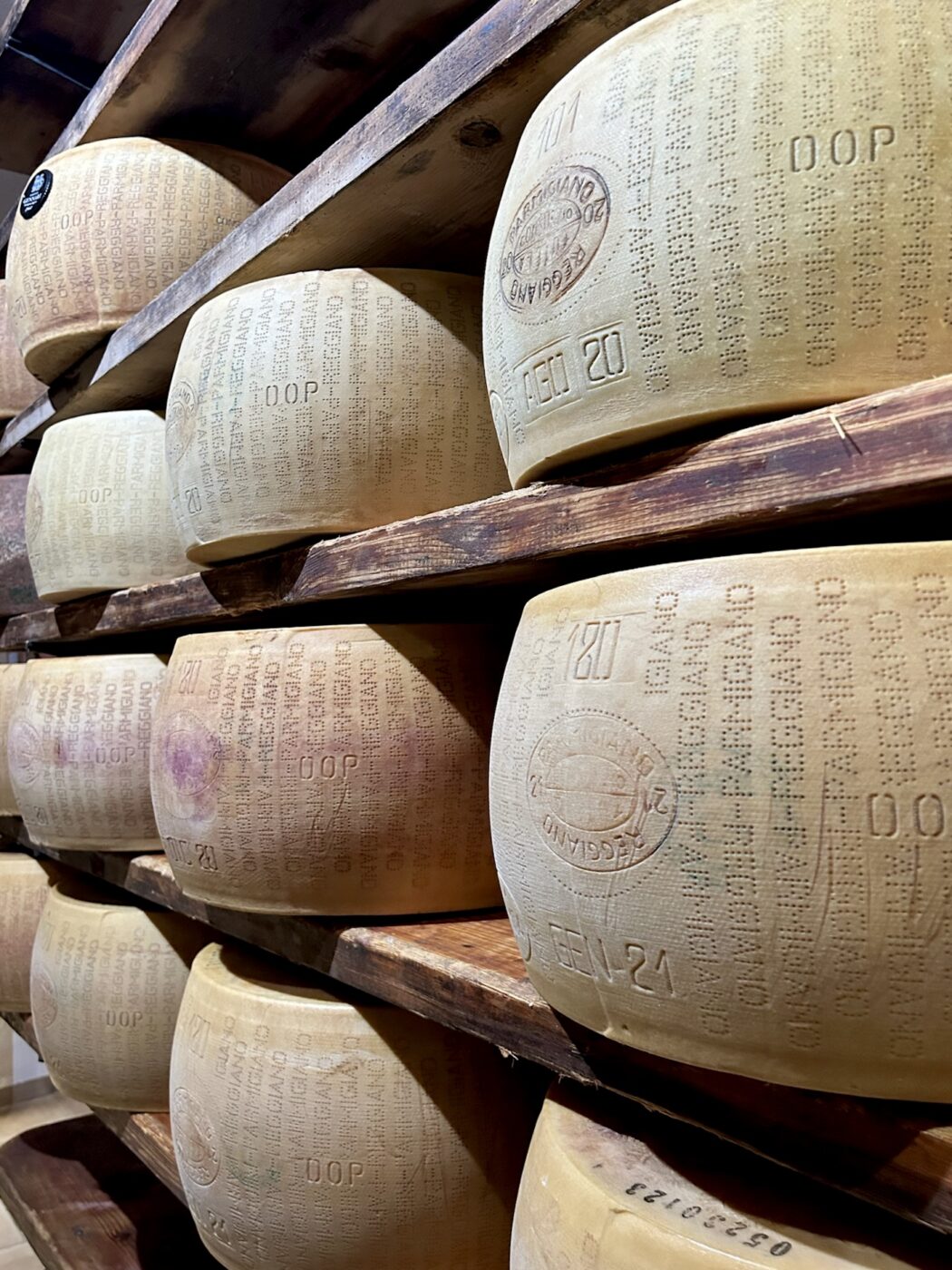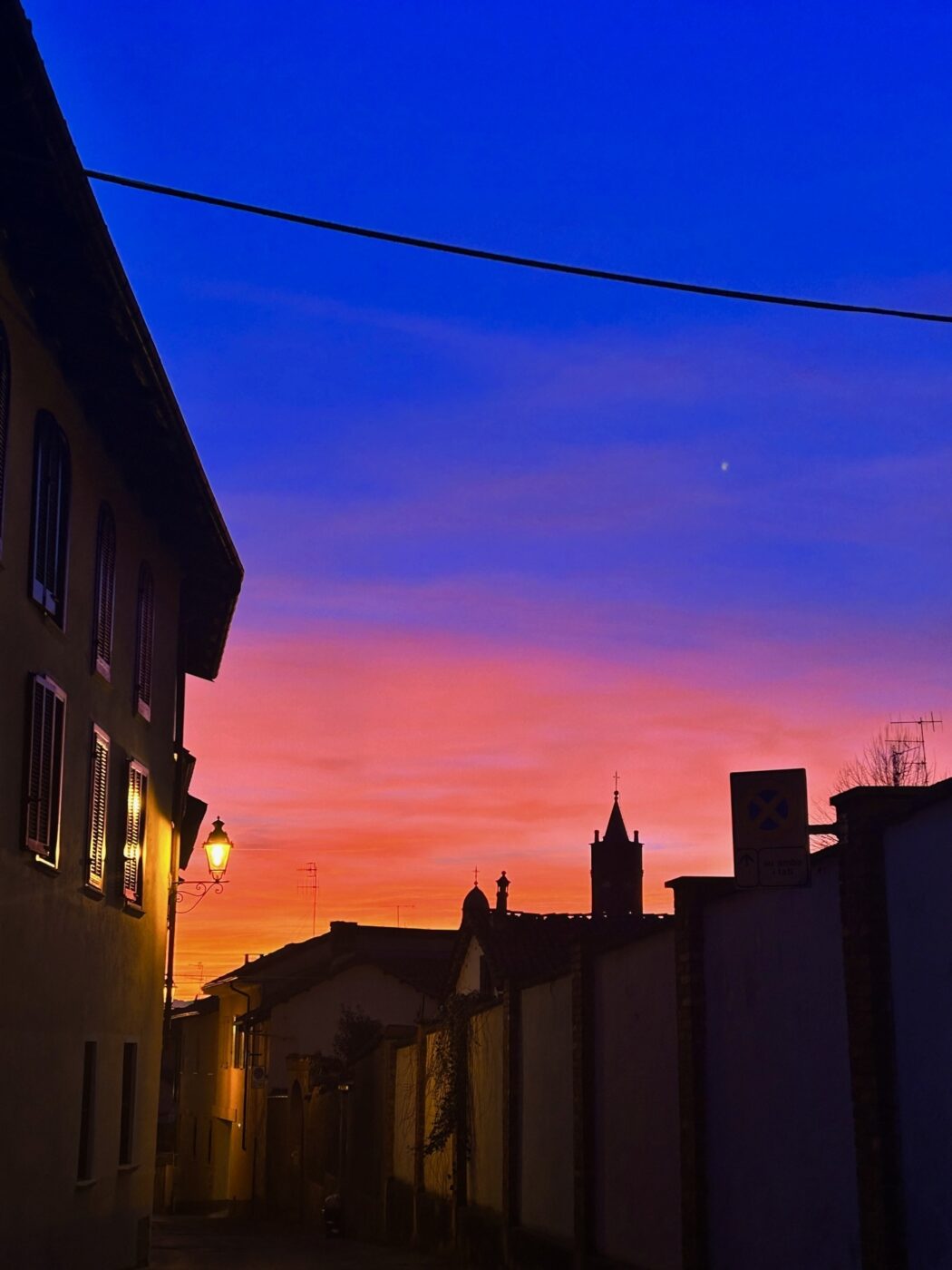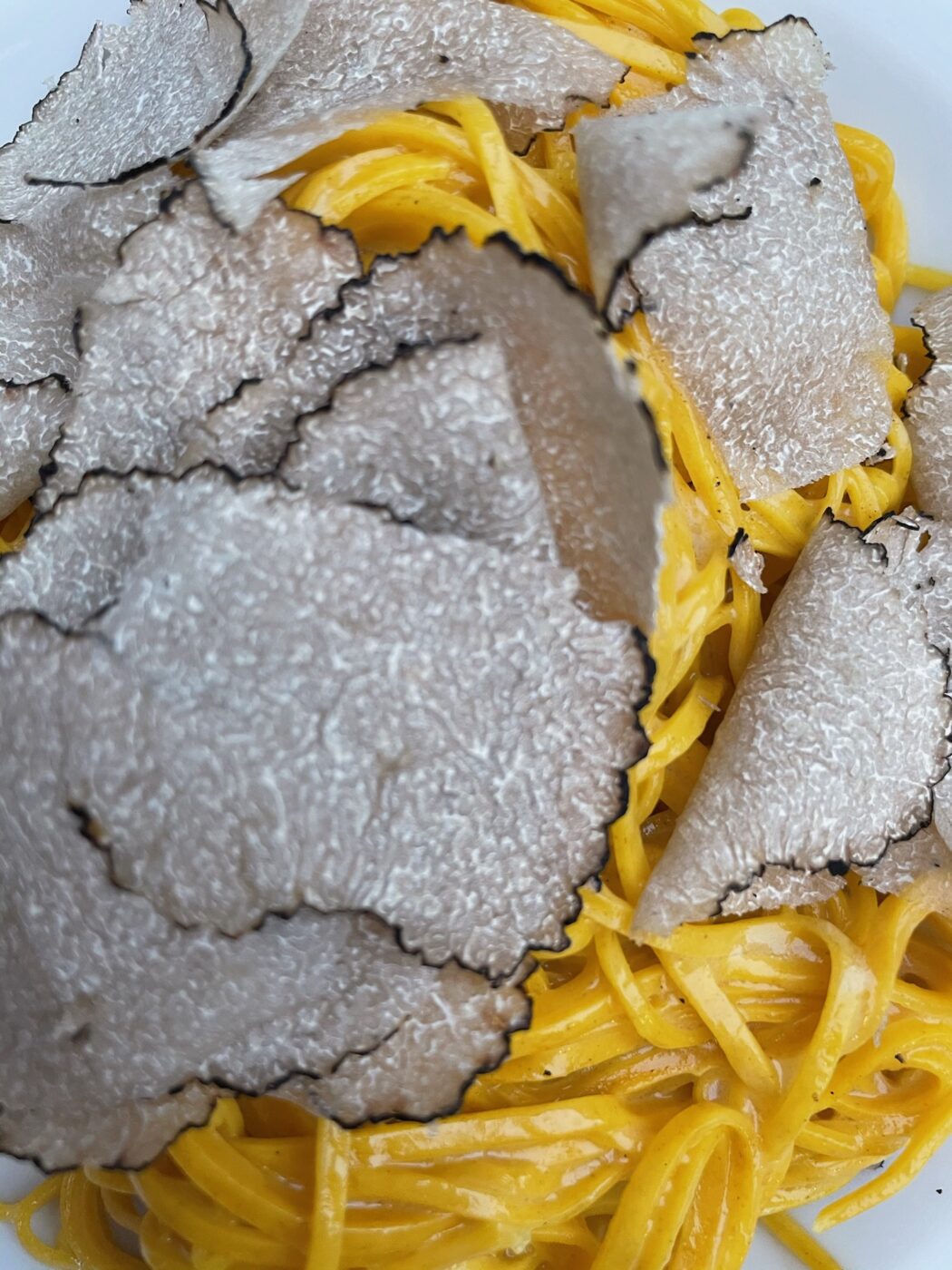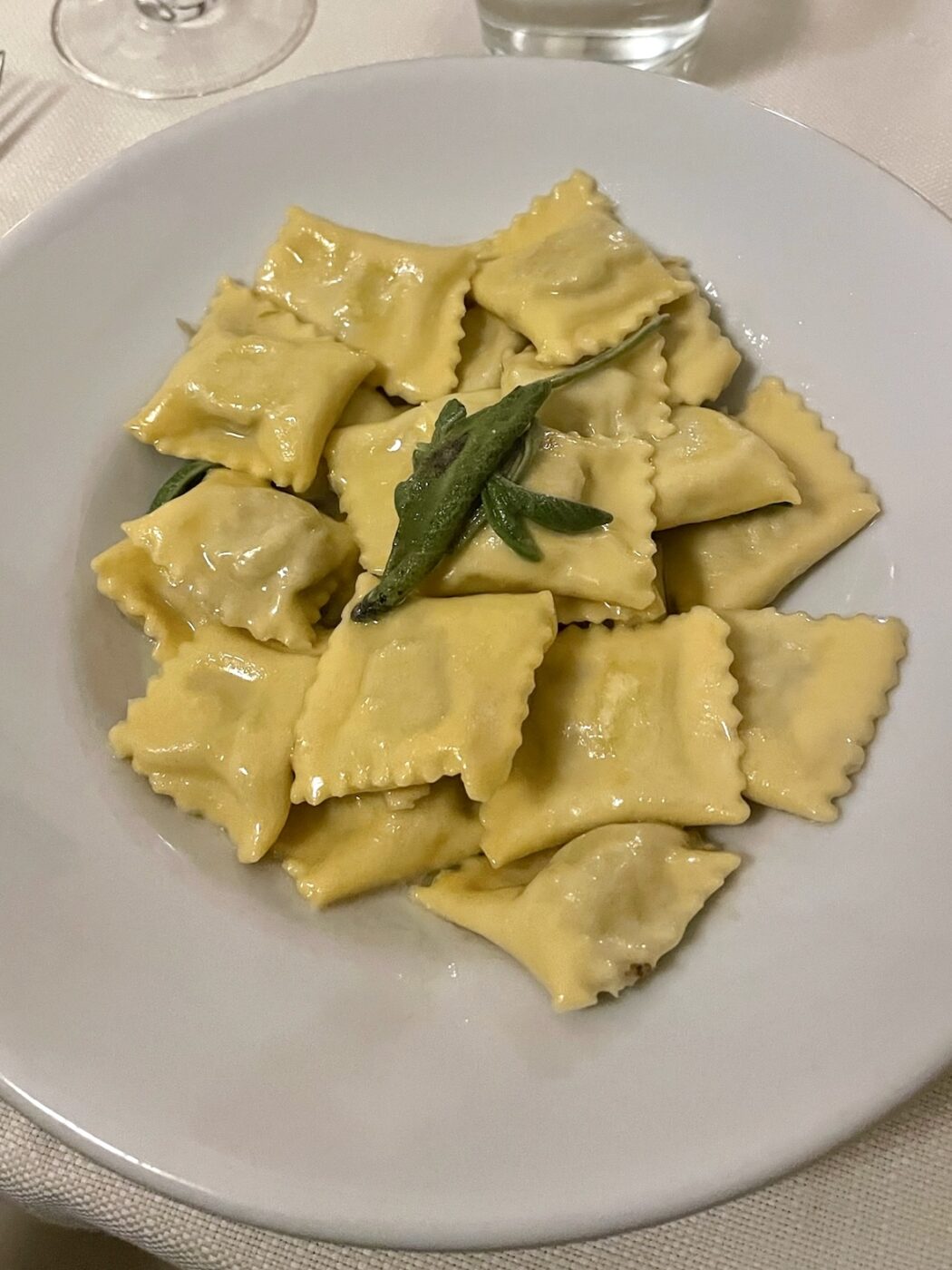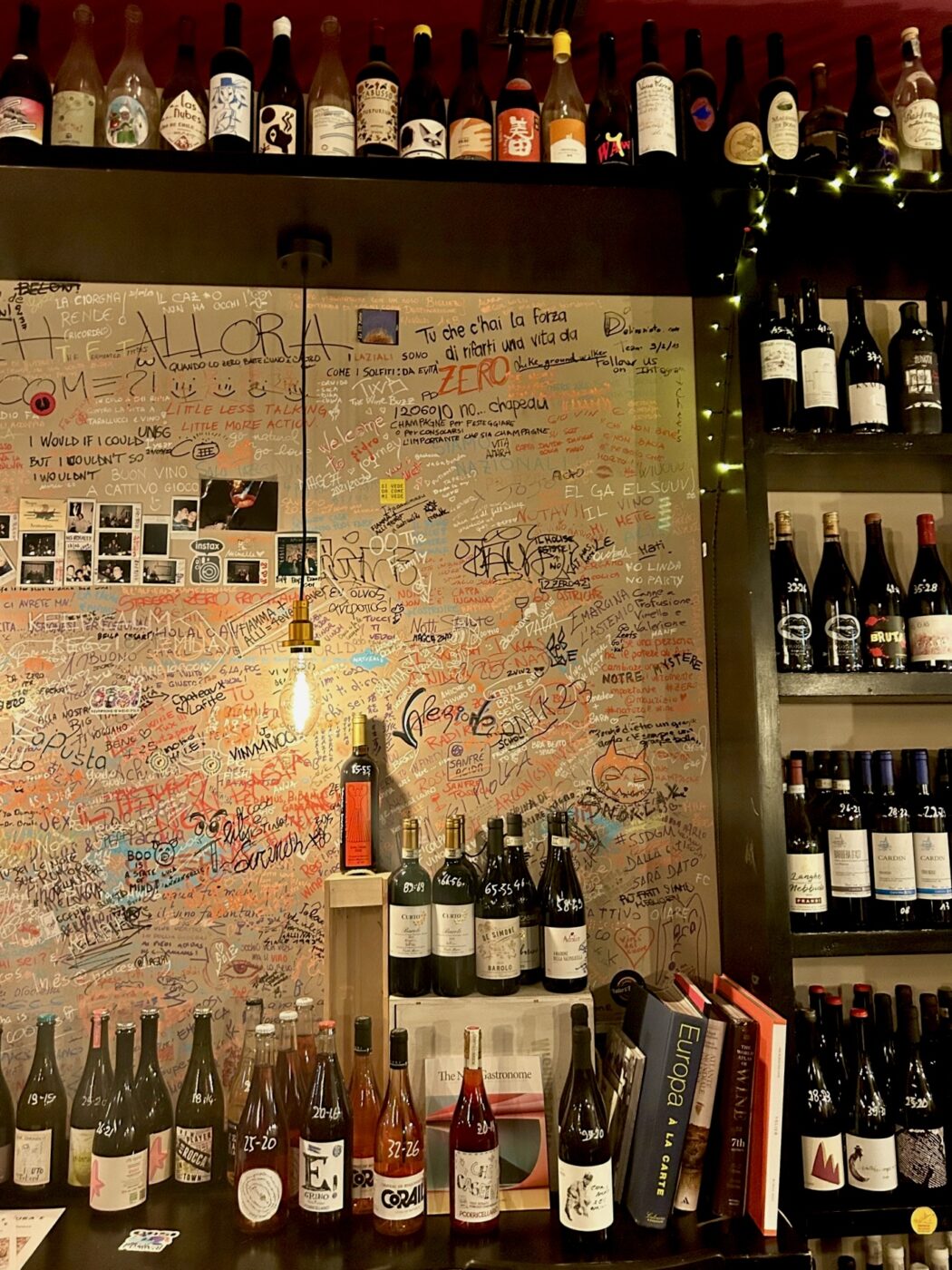Bra. Yes, it really is a city (get all your laughs out now), and, in our humble opinion, it might just be the most underrated food-lover’s destination in all of Italy. The barely 30,000-person town is snuggled up against the famed Langhe region on one side and boasts expansive views of the Alps on the other, and although it can feel charmingly provincial, the vibe here isn’t what you’d expect from a little Piedmontese hamlet. Walk the cobbled streets, and you’re likely to hear more English, Spanish, Swahili, French, and Chinese than Italian, for Bra is a university town, one that brings students from all corners of the globe–two of whom are now your Italy Segreta editors–to attend the University of Gastronomic Sciences (UNISG). Yes, this really is a school for all things food, and it was founded in 2004 by one local Carlo Petrini, the same man who started the famed Slow Food movement here in 1986 in a fiery response to the first McDonald’s opening in Italy.
This is reason alone for a blossoming dining scene, as restaurants in town take extra care to cook and serve according to Slow Food’s principles (and to satisfy the students’ trained palates), sourcing food locally and from fair producers. Combine this with the legendary cuisine of Piedmont and you’ve got a culinary hotspot that rivals, dare we say, Milan and Turin. Here’s everywhere (and everything) you should eat and drink in Bra.
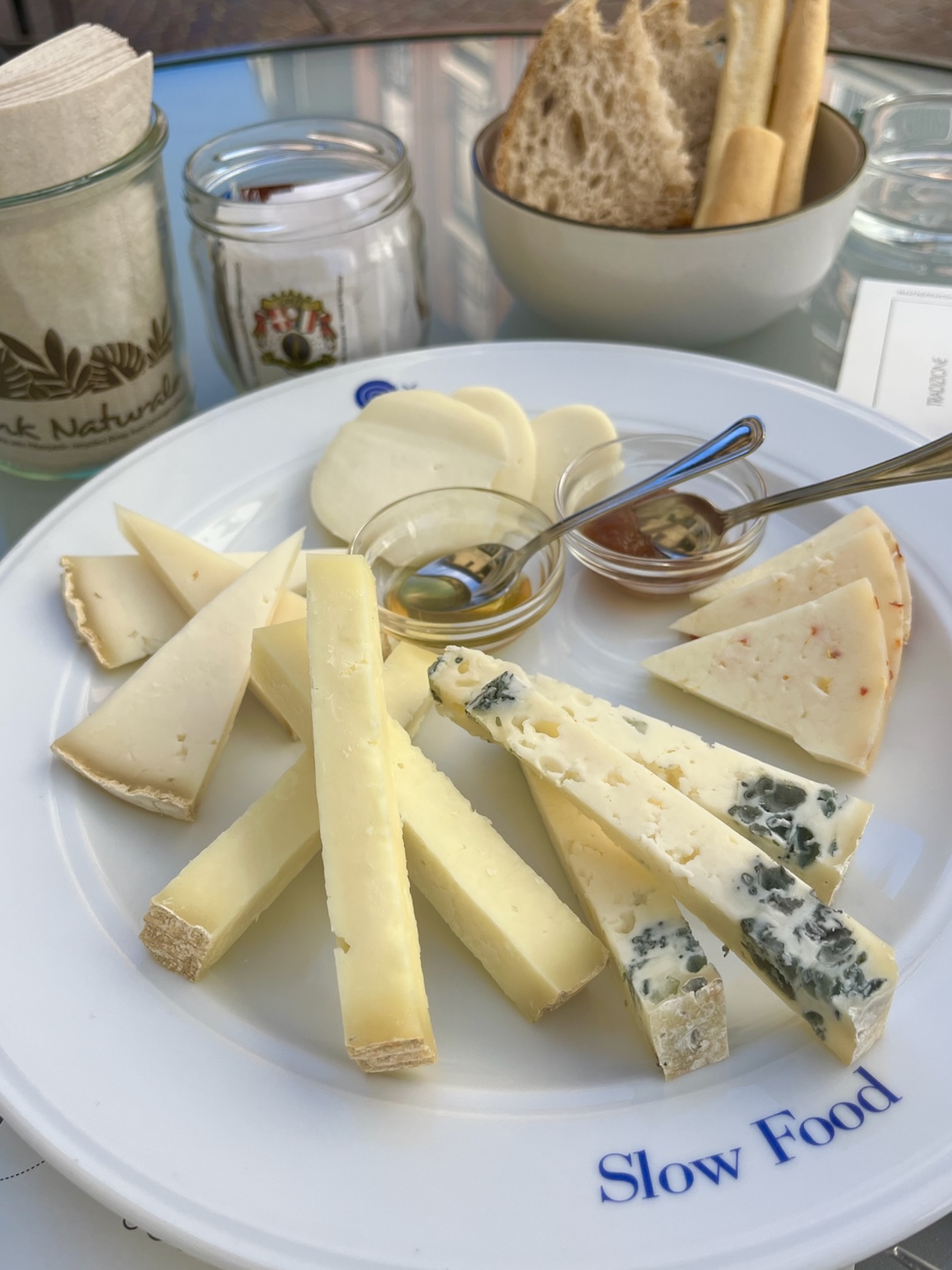
Local cheeses at Bottega Local
WHERE TO GET COFFEE IN BRA:
Converso – One of the famed Locali Storici d’Italia (Historical Places of Italy), this cafe opened in 1901 and evokes the Gilded Age in a way you don’t often find outside major cities (if you’re looking for more, check out Turin). With gold accents, wood paneled walls, minimalist vintage decor, and white booths, it’s a must for a morning cappuccino or to get a caffe al bar with the lively locals. Their adjoining pasticceria makes all sorts of pretty goodies, too. In the summer, grab a cone of gelato–the stracciatella is our favorite, featuring big chunks of scrap chocolate from their confectionery–and in the winter, cozy up inside with the thickest hot chocolate and a dollop of panna. They’ve also just made the shortlist of Gambero Rosso’s best bars in Italy for 2025.
Parallels Café – Formerly known as Bottega delle Delizie, this one might be a controversial addition, but we’re stans. With a bold “No Zucchero” sign on the door and a menu that includes bevs like cold brew and flat whites, it’s nothing like any of Bra’s, or Italy’s, typical cafes serving burn-a-hole-in-your-stomach espresso. Paolo Panero opened the spot–part cafe, part skate shop–in 2015, and it’s still the best place to pick up coffee beans, and skateboard parts, in the city. When you order, Paolo will explain your choice between two seasonal espresso beans that rotate every three weeks–go with his recommendation. They also offer a tight food menu; our go-to is a few slices of toast with jam and butter alongside our flat white–which you can also order with oat milk, if you desire.

Parallels Café
WHERE TO DRINK IN BRA:
Zero Enoteca Conviviale – We have yet to find a natural wine bar in Italy that has as great a selection as Zero. It’s all thanks to Maurizio, owner and bartender extraordinaire, who has developed a deep relationship with hundreds of producers across Italy and beyond, sourcing his bottles with extreme care and thought. The stock is always rotating, and no matter how many times you come (which for us, was quite a lot), you’re never going to drink the same thing twice. Our advice is to talk with Maurizio before choosing a bottle: give him a few key words–i.e. orange, salty, full-bodied, Puglian, funky–and he’ll pull two or three bottles and describe them so wonderfully you’d think he himself was the producer. If you come for aperitivo, you’ll usually get some type of local cheese and taralli to snack on.
Enoteca Sardo – Owned by the twin Sardo brothers, coming here feels more like you’re going over to your friend’s house than a bar–but the incredibly stocked shelves suggest otherwise. With a wide range of mostly Piedmontese labels, this enoteca is where we’ve discovered some of our favorite producers and grapes, ever. Renato and Seba are as knowledgeable as they are hilarious, and can often be spotted dancing behind the bar or challenging local patrons to a game of scopa. Check their Instagram for the occasional brunches, parties, or pop-ups they host, often at the expert hands of current and former UNISG students.
Antico Caffè Boglione – For any of the classic Campari- or gin-based drinks, Boglione is the place to be, opened in 1847 and packed with locals ever since. On any given evening, the bar is flooded with so many people that the street out front is virtually unpassable, and you’ll have to weasel your way to the bar. Even though it’s always slammed, they don’t cut corners, and their sours–made with real egg whites–are particularly good. Inside feels surprisingly chic and formal, considering it is the party place, and there’s occasionally live music, comedy sets, or a DJ; they also serve a fantastic lunch and dinner menu if you need some pre-party fuel. In the colder months, their basement turns into a club, making it the best (albeit one of the only) spots to go dancing here.
Banca del Vino (Pollenzo) – In neighboring Pollenzo (reachable by a short bus ride or lovely walk through the farmland), the Banca del Vino (Wine Bank) is an initiative of Slow Wine to help preserve Italy’s wine heritage much like a library, and is located in the 19th-century cellars of the Agenzia di Pollenzo, underneath classrooms of UNISG. Practically a museum, the banca has a heritage of over 100,000 bottles from at least 300 wineries in Italy. You can of course buy bottles, and also sip wine by loading money onto a card and pouring your own glass from wine vending machines that feature rotating selections, which you can enjoy while strolling the grounds of Pollenzo, a former Royal Estate of the House of Savoy dating back to 1835.
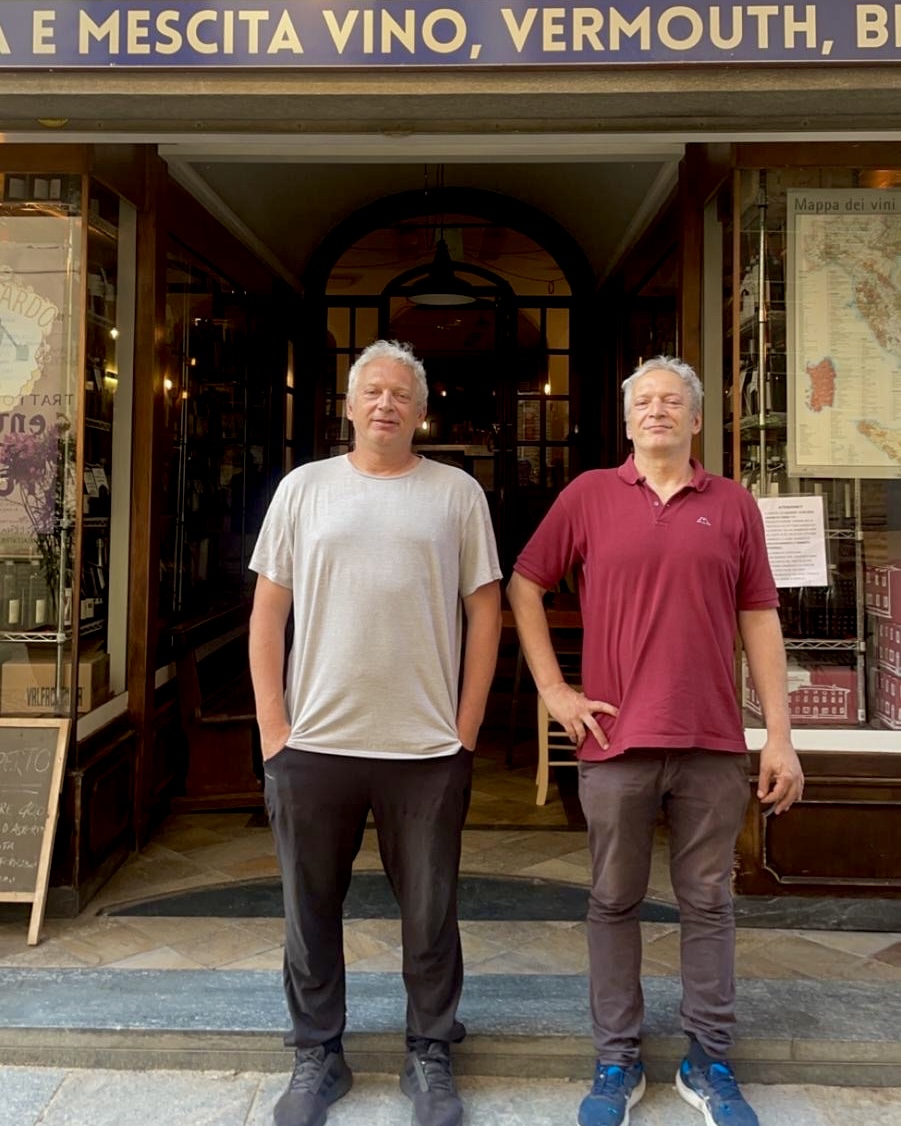
The Sardo twins of Enoteca Sardo; Photo by Katarina Marsiglio
WHERE TO EAT IN BRA:
Osteria Murivecchi – We could wax poetic about Osteria Murivecchi for an entire article, but to keep it short, just take our suggestion and eat here. The tavern-style spot serves heaping family-style portions to guests seated at large wooden tables, and features a chalkboard menu that changes every week. Part of the Hotel Cantine Ascheri, the dining rooms are located in what used to be the family’s Barolo aging cellars in the 1800s. Their actual cellars have now moved further underground, available for tours if you book ahead, and we recommend choosing from their superb selection of labels (the Barbera d’Alba is our favorite!!) to pair with your meal. Everything on the tight menu is great, and their weekly changing risotto is a must order. But the real star of the show remains the gnocchi con castelmagno, a stunning combo of a local cheese that melts right into the puffiest gnocchi. Reservations suggested.
Osteria La Bocca Buona – Tucked down a tiny covered alley, this unassuming restaurant has old school charm with modern flair. The brick walls are covered with records, and floor to ceiling windows run the length of the opposite wall. Their regional offerings vary almost entirely by the season, except for a few staples, like the epic Bra Egg: a soft-boiled scotch egg wrapped with salsiccia di bra–the whole thing is breaded and fried until the outsides are crispy but the sausage remains soft and raw. Come spring and fall, their porcini offerings–particularly the tajarin con funghi porcini–are knockouts. Reservations suggested for dinner.
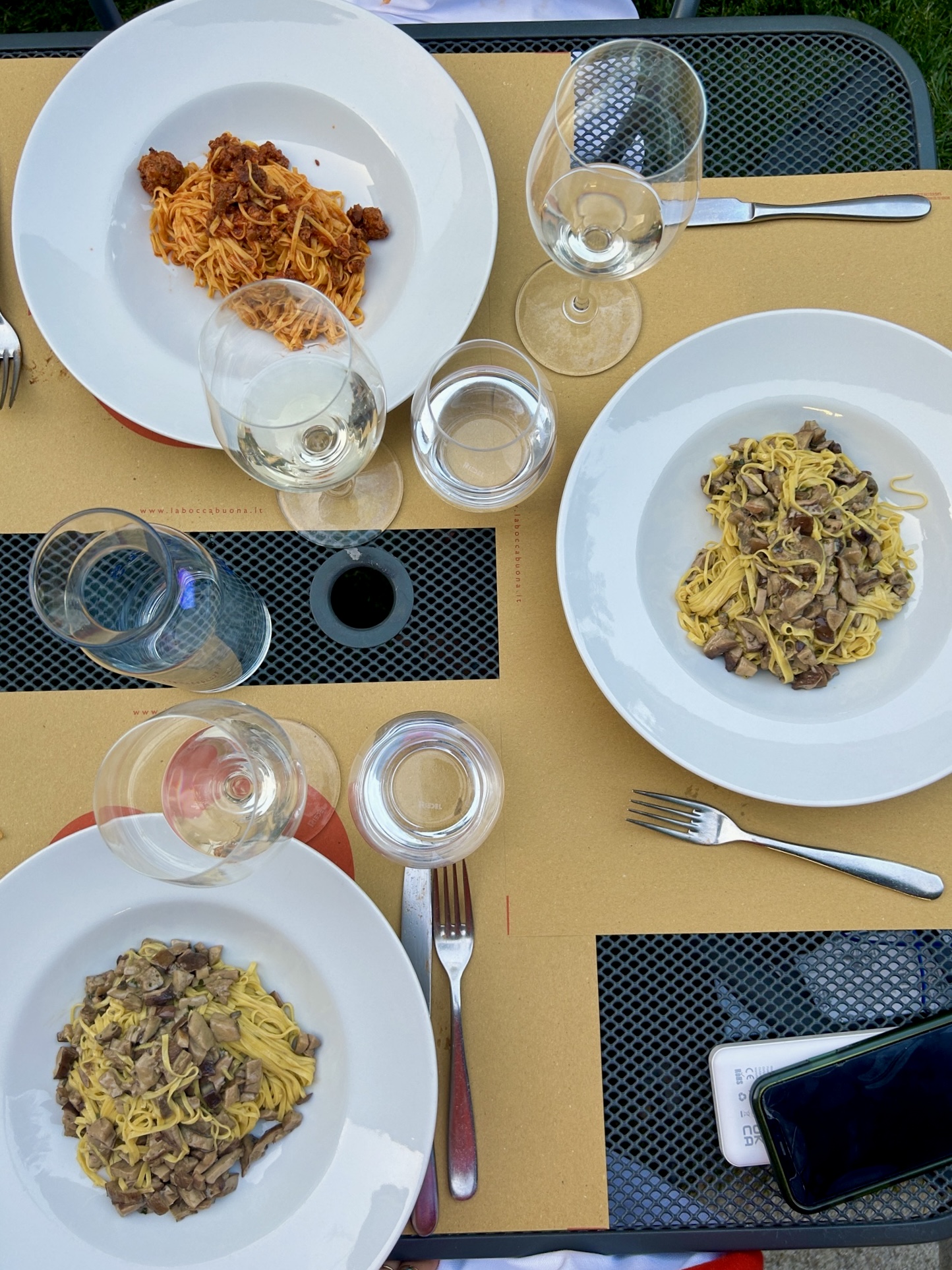
Osteria La Bocca Buona
Ristorante Battaglino dal 1919 – Opened in 1919 by railway worker Sebastiano Battaglino, the spot is now managed by his great granddaughter Alessia. With white linen tablecloths and a beautiful garden–best when the wisteria is in bloom–the spot feels slightly more upscale, matched by their elevated takes on the classics. Half of their menu, however, is vegan and vegetarian, inspired by Alessia’s courses in macrobiotics. Get the baked Toumin cheese to start and the tripe, snails, or finanziera for a secondo; when it comes to primi, we always opt for the agnolotti del plin with sugo d’arrosto or, to be even more traditional, “al tovagliolo,” which literally means in a napkin–like how locals schoolkids would historically carry their lunch. Their wine list is brilliantly curated by Alessia’s partner Michele, and the restaurant has a well-deserved spot on the Michelin Guide. Don’t miss their special White Truffle menu during the season. Reservations required.
Trattoria La Gallinaccia – This cozy, traditional restaurant boasts the best tajarin con salsiccia di bra in the city, with noodles so thin you could read through them and a sauce that’s cinnamony, tomatoey, and meaty all at the same time. The rest of their seasonal menu excels as well, from the vitello tonnato and bagna cauda to the stracotto al nebbiolo and trippa, which you can watch the chef whipping up in the semi-open kitchen. Reservations suggested on weekends.
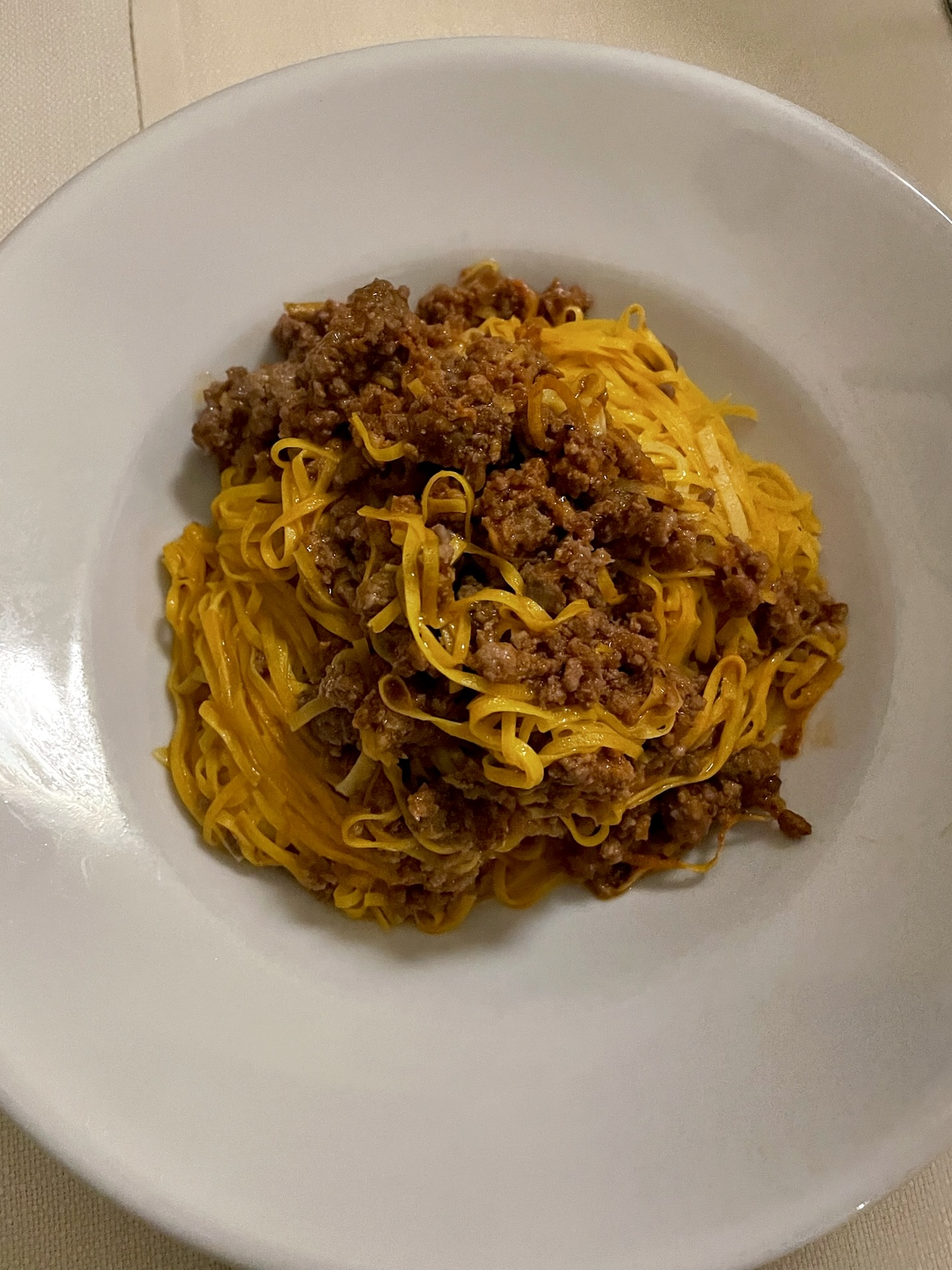
Tajarin con salsiccia di Bra from Trattoria La Gallinaccia
Osteria del Boccondivino – The official Slow Food restaurant is a must-stop on any tour of Bra. Opened in 1984, Boccondivino is located within the international headquarters of Slow Food, and has a nod from Michelin. Sitting outside in their wisteria-covered garden in the spring and summer is particularly lovely, and they have a great selection of wines from cellars in the Langhe and Roero. Their 40-yolk tajarin is delightful, however the pièce de résistance is the panna cotta, an irresistibly creamy dessert that’s made it onto our ultimate list of to-die for dishes. Reservations required.
480°Gradi Pizzeria – Named after the temperature of a Neapolitan pizza oven, 480° has some of the best Neapolitan pizza north of the eponymous seaside city. It all starts with their dough, which rises for at least 36 hours so it’s chewy, soft, and easily digestible. They’ve got the usual lineup of pizza combos (the salsiccia e friarielli is a must) plus a chalkboard with weekly changing ones, usually based on whatever veggies are in season. Our favorite, though, is the spicy and tangy spilinghese made with fiery ‘nduja sausage, fresh tomatoes, Tropea red onions, and mozzarella di bufala. Their tight list of Neapolitan pastas, antipasti, fritti, and desserts are great too, and if you’re feeling really hungry, you can opt for one of the montanarine–the fried dough puffs that you find in Naples.
Pizzeria Santa Lucia – The thin-crust contingent will love this local’s favorite spot, which has a line out the door come Friday evening. You’ll probably have to wait upwards of an hour for your pizza, but it’s worth it. The crispy pies get fired in a wood oven and come served with a smattering of topping choices. The historic joint is run entirely by women, all spectacles in and of themselves. Best to order a beer and wait patiently.
La Boqueria – In a beautifully tiled space near the train station, this restaurant/caffe serves a refreshingly not Piedmontese menu. Instead, their offerings are a nod to the Mediterranean, with dishes like paccheri con ‘nduja, couscous, and tajin. It’s also a great place to come for coffee (or Moroccan tea) and relax in their small literary lounge with a good book. The back garden is also nice for aperitivo, and, above the restaurant, a charming three-room guesthouse is on offer.
Teosinte – This “post-gastronomic bistro” is a recent opening by UNISG grads Bianca Ghiuzan, Stefano Nunes, and Isaac Pérez, who missed the tastes of home and, most of all, traditional nixtamalized corn tortillas. With a focus on the namesake crop (wild corn native to Mesoamerica), Teosinte specializes in tacos, but certainly isn’t limited to them. With a constantly rotating menu that showcases the endless imagination of the founders, you’ll dine differently every time you eat here–and it will never be boring. Soft tortillas might be topped by eggplant, datterini tomatoes, smoked ricotta, and basil or cumin-spiced beans, onions, and carrots in agrodolce. Dessert could be purple carrot cake with white chocolate ganache and carrot jam or a tart with a blue corn shortcrust pastry and layers of almond frangipane and salted caramel. Weekend brunch entails fluffy pancakes and other delights. A great selection of natural wines rounds out the picture.
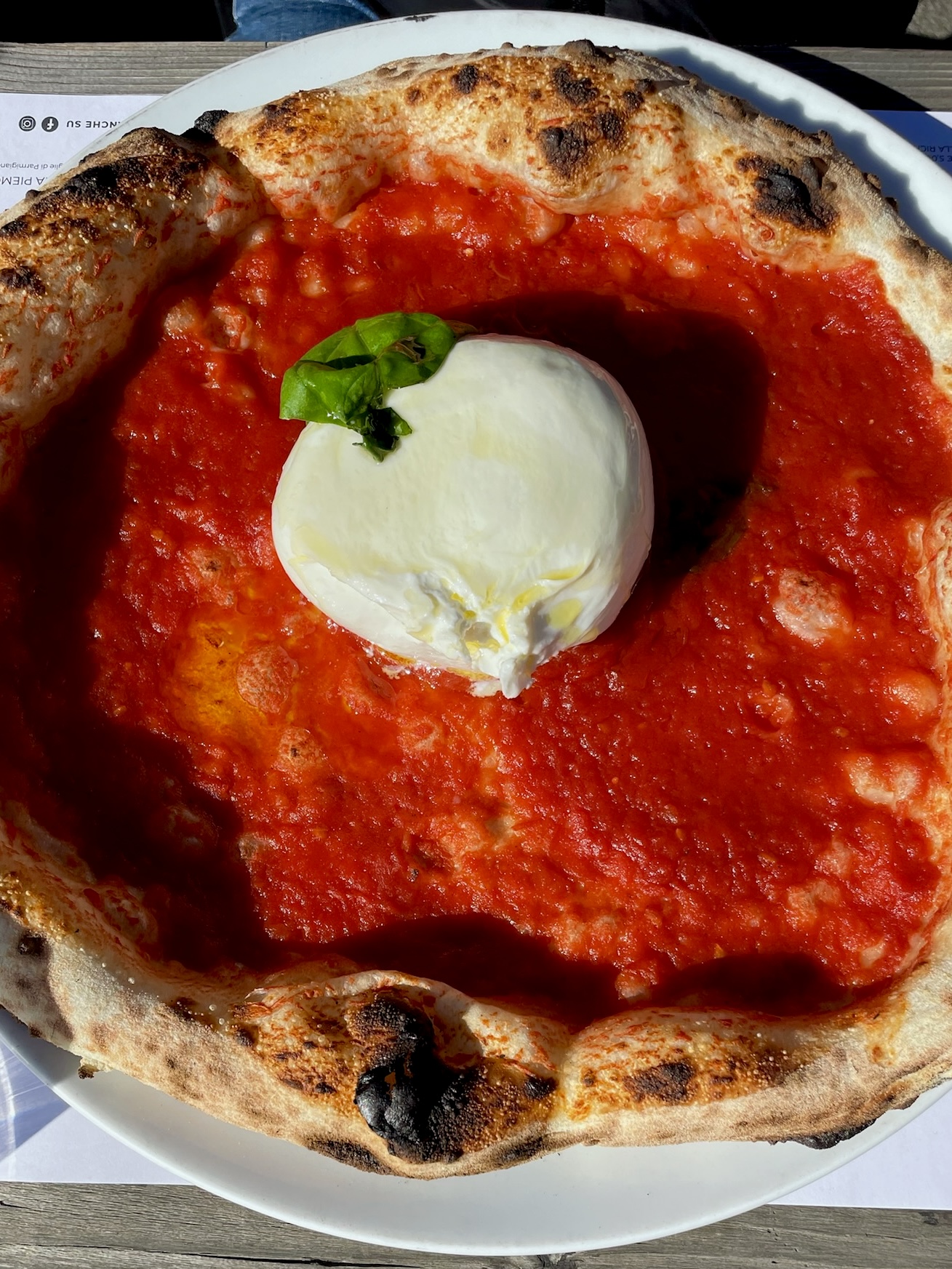
480° Gradi Pizzeria
THE BEST BAKERIES IN BRA:
Lo Sfizio di… Panetteria Pasticceria – Known to the locals as “lo sfizio”, this bakery’s bread is the best in the town, but it’s their focaccia that we really come here for: the normal, crunchy, onion-topped, and cheese (di recco) versions rival those in Liguria. You can also pick up grissini, baguettes (best for crostini), and the iconic cioccolato e sale cookies. You’re going to want to get in the queue here somewhat early, before all the best things sell out.
Giamp Pasticceria – The flaky, buttery croissants at this adorable, pale blue bakery are more reminiscent of the ones in Paris than the typical Italian cornetto, and they come filled with anything of your desires: chocolate, nutella, jam, pistachio (our favorite), or cream. Run by a team of women, the pasticceria also serves delicious, pretty little desserts for €1 each–perfect for bringing a selection to a dinner or just to try them all–and you can special order cakes and tarts. Don’t be late, for the aforementioned croissants are sometimes gone by as early as 9:30 AM. You can also pop by in the afternoon for a gelato merenda, and we suggest you opt for their take on stracciatella.
THE BEST GELATO IN BRA:
Gelato IGP – You might miss this tiny storefront underneath Bra’s porticos, but don’t. IGP, which they claim stands for “Il Gelato Perfetto”, is a play on the IGP denomination for ingredients of high quality in Italy–something they source, as well. Though we’re usually partial to the cream based flavors, their sorbets are made with just water and fruit, and make a nice snack on a hot summer’s day. Opt for whatever the seasonal, funky flavors are, or grab a homemade ice cream sandwich from the freezer.
Gelateria Fior di Panna – Right outside the main centro, this gelateria has the creamiest gelato in town. The owners and staff serve each person in what can become a long line with a big smile, and the front patio is usually filled with young kids eagerly licking their cones. Here, they’ve got superlative versions of all the typical flavors, but we’re particularly partial to pairing yogurt or crema with something fruity.
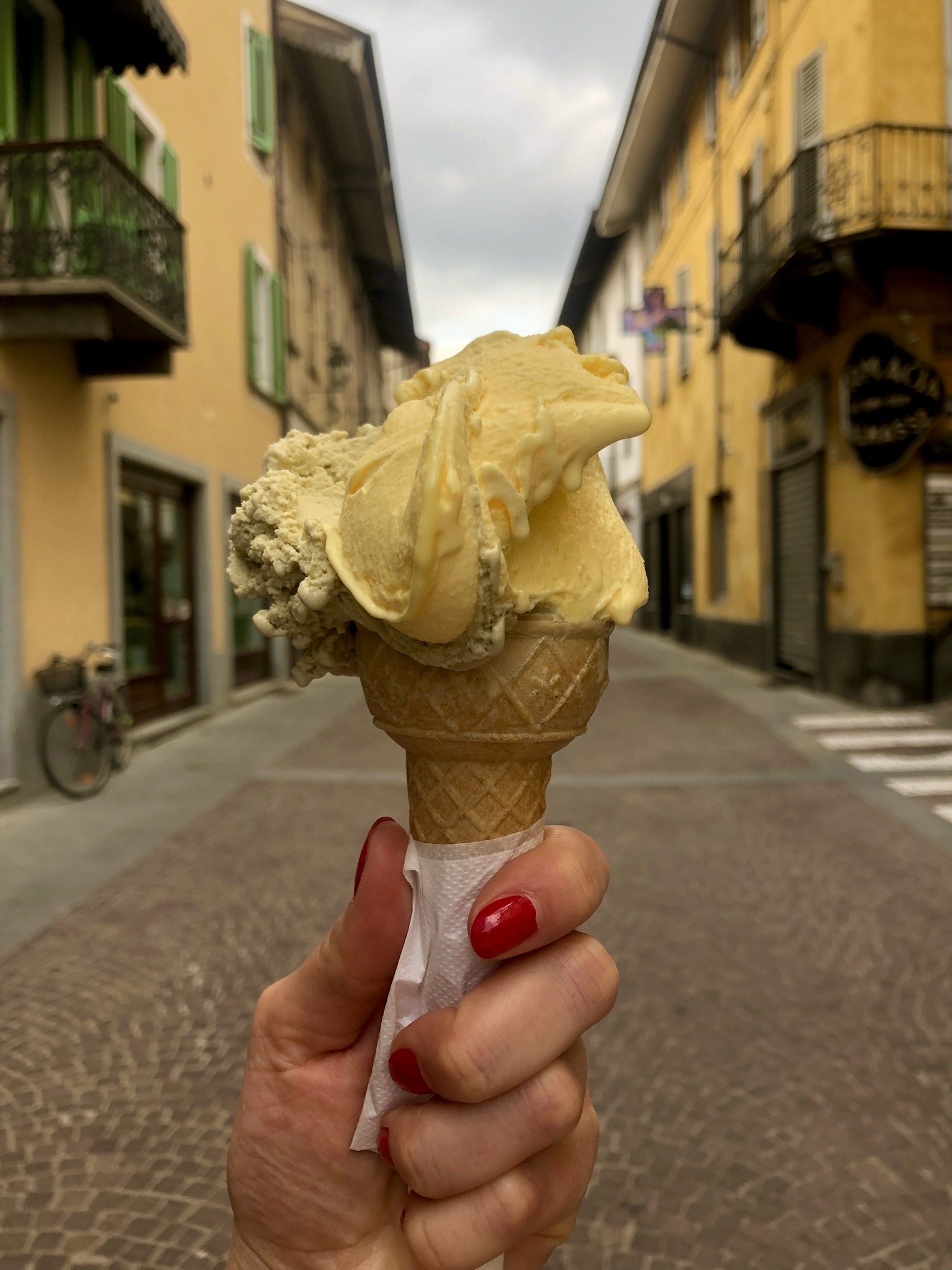
Gelato from Converso
WHERE TO SHOP FOR FOOD IN BRA:
Giolito Formaggio – Giolito is the spot for cheese, and not just in Bra; the formaggeria is known across Italy (and internationally) for their incredible selections. For over 100 years, the family has been collecting and selling cheese across Liguria and Piedmont at markets, and in the 1970s, Giolito became a brick and mortar. But here, they do more than just sell cheese–they also mature local raw milk cheeses from small producers in their on-site cellars, where they even play classical music to some of the wheels. They also have a small museum where you can learn about the history of cheese production in Italy, paired with a tour of the cellars and what they’ve deemed a “cheese aperitivo”. You can try all the local goodies here and pick up superb butter and milk, too; but their manicomio cheese–a secret, addicting concoction made tangy and sweet with gorgonzola–is truly the stuff of legends.
Allocco’s Kitchen – The best gastronomia in town, Allocco’s Kitchen is run by Bradaise husband-and-wife team Andrea and Michela. Here, you can find everything from hummus and granola (one of our pantry staples) to assorted ravioli, gnocchi, and tajarin, plus a whole smattering of prepared dishes, where they often feature veggies over meat. Their offerings are entirely seasonal, and most of the ingredients come from local producers. Not only is the couple the sweetest duo in town, they’ll also be happy to recommend how to best enjoy their creations.
Piazza Giolitti Farmer’s Market – Every Saturday morning, this tiny covered piazza hosts a completely organic, locally sourced farmers market. Stop in to pick up seasonal fruit and veggies or things like rice, gianduja, honey, sauces, jams, and olives to add to your pantry or to bring as souvenirs. All of the vendors are incredibly kind and will be happy to suggest preparation methods for the produce (especially the kind that’s unique to the area), making the market exactly the type of place Carlo Petrini envisioned when he founded Slow Food.
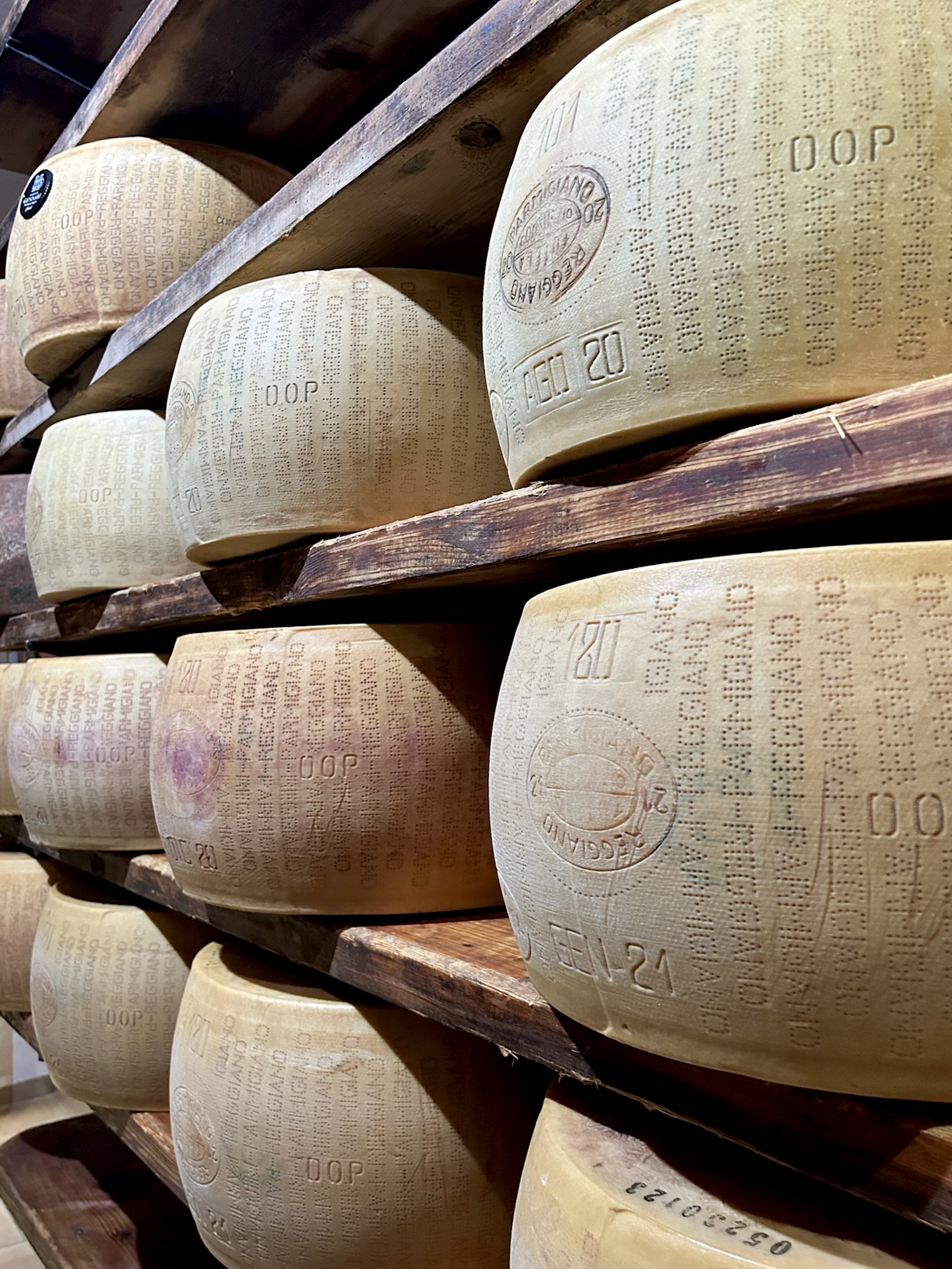
Giolito Formaggio

